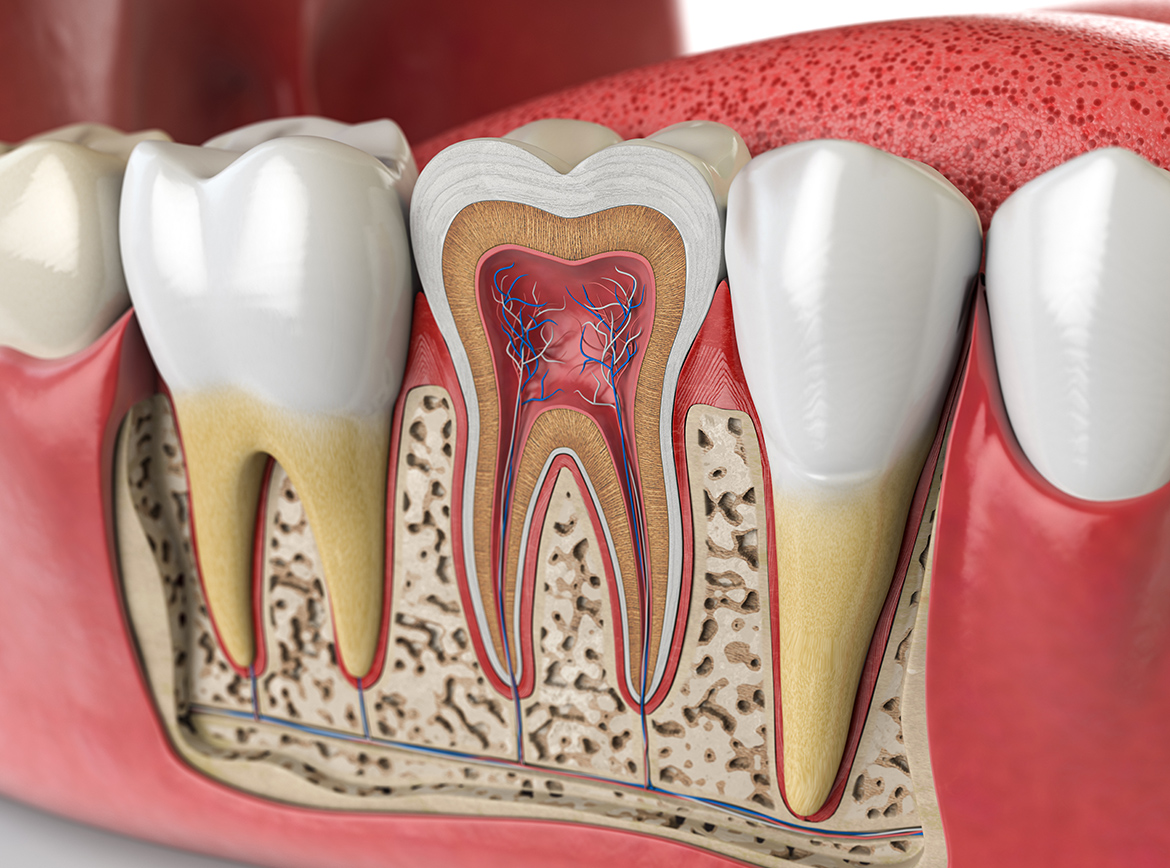Root canal treatment in Southport
Root Canal Treatment
Southport Park Family Dental
What is Root Canal Treatment?
Root canal treatment is a procedure where the infected or damaged nerve in the tooth is removed and replaced with a filling. The aim of a root canal is to save a tooth that has been badly damaged due to decay, disease or injury.

The Healthy Tooth
The hard outer layer of the tooth is known as the enamel. This is the part that you can see and sits above the gum line. The part of the tooth below the gum line is known as the root and it helps to anchor the tooth into the jaw bone. The deeper tissue below the enamel is known as the dentine and further below this is the soft tissue known as dental pulp. The pulp contains blood vessels, nerves, and connective tissue. It extends from the tooth crown to the tip of each root. The pulp is important for the normal growth, development, and health of the tooth.
However, a fully developed tooth can function normally without a pulp if root canal treatment has been successful. The tooth can receive nutrients from the tissues surrounding it, which means the tooth is not considered to be dead following root canal treatment.
When is a Root Canal Treatment Needed?
There may be several causes for damage or disease to the pulp. An infection or inflammation of the pulp can be caused by:
-
- Breakdown of a filling or crown
- A deep cavity
- Trauma
- Gum disease
- Crack or chip in the tooth
- Extreme wear


What are the Signs I Might Need a Root Canal Treatment?
Symptoms may include pain, sensitivity to heat or cold, tooth discolouration, and swelling or soreness in the gums surrounding the tooth. To save the tooth, root canal treatment is needed when the pulp becomes severely inflamed or infected.
If the tooth remains untreated, pain can become worse, and a serious infection may occur at the root of the tooth known as an abscess. If an abscess is left untreated, infection can damage the bone surrounding the root. Typically, if a root canal treatment has been recommended and is not done, the tooth would have to be removed.
It is always preferred to save an existing tooth than to have it removed however, it is ultimately your decision. The removal of a tooth can cause neighbouring teeth to move and may affect biting, chewing and your overall oral health.
What Happens During a Root Canal Treatment?
To improve the chances of success, root canal treatment should be started as soon as possible. All general dentists are trained to perform root canal treatment. During the root canal, the dentist will need to treat every canal in the tooth. Different teeth have different number of canals. The teeth towards the front of the mouth typically have one or two canals while the ones towards the back typically have three or four.
The dentist will first examine the tooth and take an x-ray. A local anaesthetic is usually given to block pain. A sheet is applied called a rubber dam and is used to isolate the tooth and keep it clean and dry during treatment. An opening in the tooth is made using a dental drill to reach the pulp. Using special instruments called files, the inflamed or infected pulp is removed. Each root canal is cleaned, enlarged and shaped. X-rays may be taken multiple times throughout the appointment to check the shape and length of the root canals and the success of the treatment. To protect the inside of the tooth, the root canals are filled, and the pulp chamber is sealed. The tooth may be more likely to fracture following a root canal treatment and may require an artificial crown to be fitted to strengthen the tooth.
